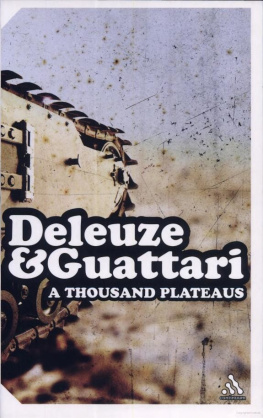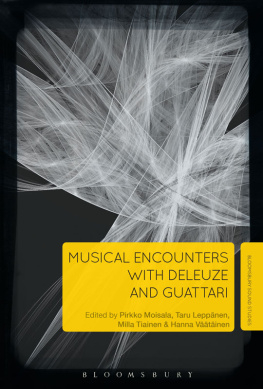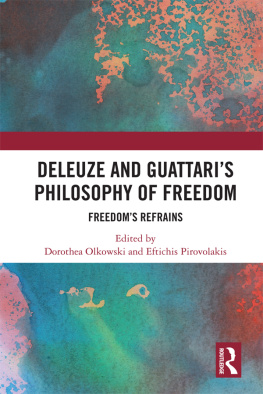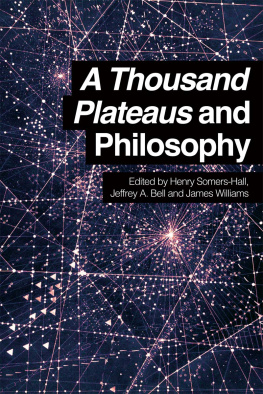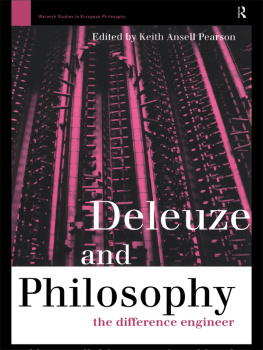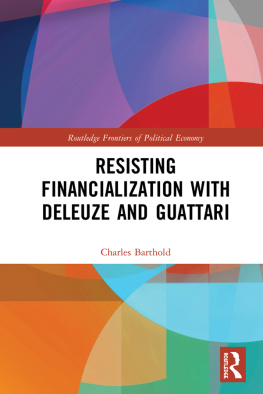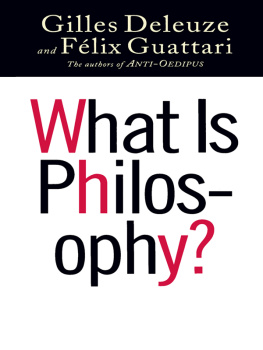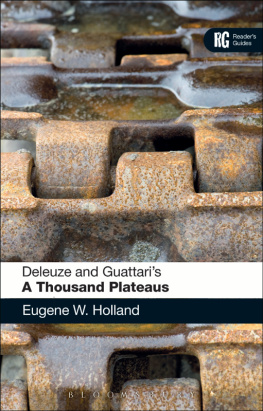A Thousand Plateaus
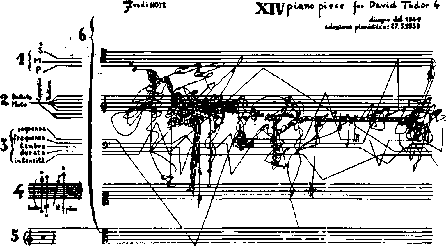
SYLVANO BUSSOTI
The two of us wrote Anti-Oedipus together. Since each of us was several, there was already quite a crowd. Here we have made use of everything that came within range, what was closest as well as farthest away. We have assigned clever pseudonyms to prevent recognition. Why have we kept our own names? Out of habit, purely out of habit. To make ourselves unrecognizable in turn. To render imperceptible, not ourselves, but what makes us act, feel, and think. Also because its nice to talk like everybody else, to say the sun rises, when everybody knows its only a manner of speaking. To reach, not the point where one no longer says I, but the point where it is no longer of any importance whether one says I. We are no longer ourselves. Each will know his own. We have been aided, inspired, multiplied.
A book has neither object nor subject; it is made of variously formed matters, and very different dates and speeds. To attribute the book to a subject is to overlook this working of matters, and the exteriority of their relations. It is to fabricate a beneficent God to explain geological movements. In a book, as in all things, there are lines of articulation or segmentarity, strata and territories; but also lines of flight, movements of deterritorialization and destratification. Comparative rates of flow on these lines produce phenomena of relative slowness and viscosity, or, on the contrary, of acceleration and rupture. All this, lines and measurable speeds, constitutes an assemblage. A book is an assemblage of this kind, and as such is unattributable. It is a multiplicity but we dont know yet what the multiple entails when it is no longer attributed, that is, after it has been elevated to the status of a substantive. One side of a machinic assemblage faces the strata, which doubtless make it a kind of organism, or signifying totality, or determination attributable to a subject; it also has a side facing a body without organs, which is continually dismantling the organism, causing asignifying particles or pure intensities to pass or circulate, and attributing to itself subjects that it leaves with nothing more than a name as the trace of an intensity. What is the body without organs of a book? There are several, depending on the nature of the lines considered, their particular grade or density, and the possibility of their converging on a plane of consistency assuring their selection. Here, as elsewhere, the units of measure are what is essential: quantify writing. There is no difference between what a book talks about and how it is made. Therefore a book also has no object. As an assemblage, a book has only itself, in connection with other assemblages and in relation to other bodies without organs. We will never ask what a book means, as signified or signifier; we will not look for anything to understand in it. We will ask what it functions with, in connection with what other things it does or does not transmit intensities, in which other multiplicities its own are inserted and metamorphosed, and with what bodies without organs it makes its own converge. A book exists only through the outside and on the outside. A book itself is a little machine; what is the relation (also measurable) of this literary machine to a war machine, love machine, revolutionary machine, etc. and an abstract machine that sweeps them along? We have been criticized for overquoting literary authors. But when one writes, the only question is which other machine the literary machine can be plugged into, must be plugged into in order to work. Kleist and a mad war machine, Kafka and a most extraordinary bureaucratic machine (What if one became animal or plant through literature, which certainly does not mean literarily? Is it not first through the voice that one becomes animal?) Literature is an assemblage. It has nothing to do with ideology. There is no ideology and never has been. All we talk about are multiplicities, lines, strata and segmentarities, lines of flight and intensities, machinic assemblages and their various types, bodies without organs and their construction and selection, the plane of consistency, and in each case the units of measure. Stratometers, deleometers, BwO units of density, BwO units of convergence: Not only do these constitute a quantification of writing, but they define writing as always the measure of something else. Writing has nothing to do with signifying. It has to do with surveying, mapping, even realms that are yet to come.
A first type of book is the root-book. The tree is already the image of the world, or the root the image of the world-tree. This is the classical book, as noble, signifying, and subjective organic interiority (the strata of the book). The book imitates the world, as art imitates nature: by procedures specific to it that accomplish what nature cannot or can no longer do. The law of the book is the law of reflection, the One that becomes two. How could the law of the book reside in nature, when it is what presides over the very division between world and book, nature and art? One becomes two: whenever we encounter this formula, even stated strategically by Mao or understood in the most dialectical way possible, what we have before us is the most classical and well reflected, oldest, and weariest kind of thought. Nature doesnt work that way: in nature, roots are taproots with a more multiple, lateral, and circular system of ramification, rather than a dichotomous one. Thought lags behind nature. Even the book as a natural reality is a taproot, with its pivotal spine and surrounding leaves. But the book as a spiritual reality, the Tree or Root as an image, endlessly develops the law of the One that becomes two, then of the two that become four Binary logic is the spiritual reality of the root-tree. Even a discipline as advanced as linguistics retains the root-tree as its fundamental image, and thus remains wedded to classical reflection (for example, Chomsky and his grammatical trees, which begin at a point S and proceed by dichotomy). This is as much as to say that this system of thought has never reached an understanding of multiplicity: in order to arrive at two following a spiritual method it must assume a strong principal unity. On the side of the object, it is no doubt possible, following the natural method, to go directly from One to three, four, or five, but only if there is a strong principal unity available, that of the pivotal taproot supporting the secondary roots. That doesnt get us very far. The binary logic of dichotomy has simply been replaced by biunivocal relationships between successive circles. The pivotal taproot provides no better understanding of multiplicity than the dichotomous root. One operates in the object, the other in the subject. Binary logic and biunivocal relationships still dominate psychoanalysis (the tree of delusion in the Freudian interpretation of Schrebers case), linguistics, structuralism, and even information science.
The radicle-system, or fascicular root, is the second figure of the book, to which our modernity pays willing allegiance. This time, the principal root has aborted, or its tip has been destroyed; an immediate, indefinite multiplicity of secondary roots grafts onto it and undergoes a flourishing development. This time, natural reality is what aborts the principal root, but the roots unity subsists, as past or yet to come, as possible. We must ask if reflexive, spiritual reality does not compensate for this state of things by demanding an even more comprehensive secret unity, or a more extensive totality. Take William Burroughss cut-up method: the folding of one text onto another, which constitutes multiple and even adventitious roots (like a cutting), implies a supplementary dimension to that of the texts under consideration. In this supplementary dimension of folding, unity continues its spiritual labor. That is why the most resolutely fragmented work can also be presented as the Total Work or Magnum Opus. Most modern methods for making series proliferate or a multiplicity grow are perfectly valid in one direction, for example, a linear direction, whereas a unity of totalization asserts itself even more firmly in another, circular or cyclic, dimension. Whenever a multiplicity is taken up in a structure, its growth is offset by a reduction in its laws of combination. The abortionists of unity are indeed angel makers,

